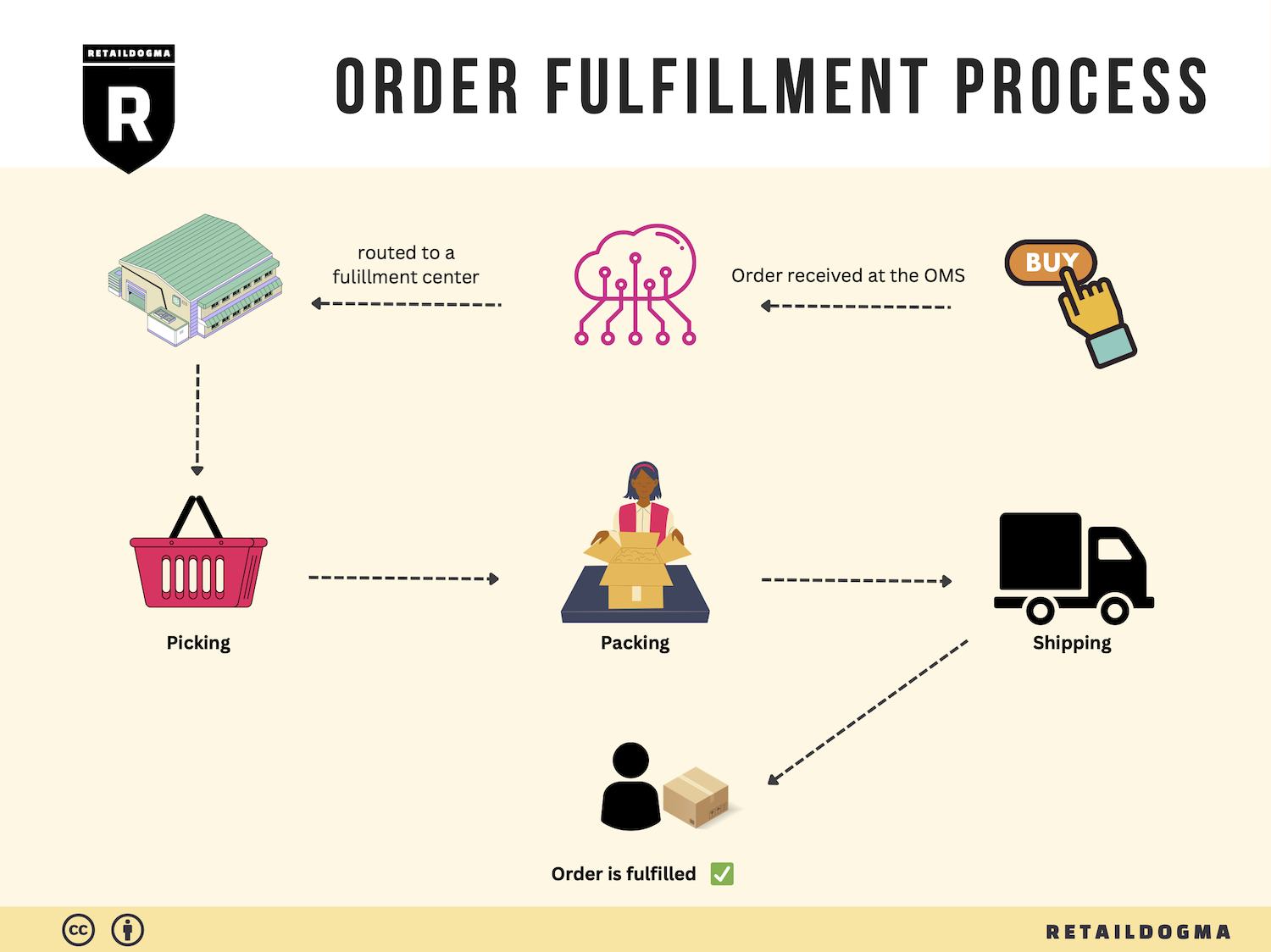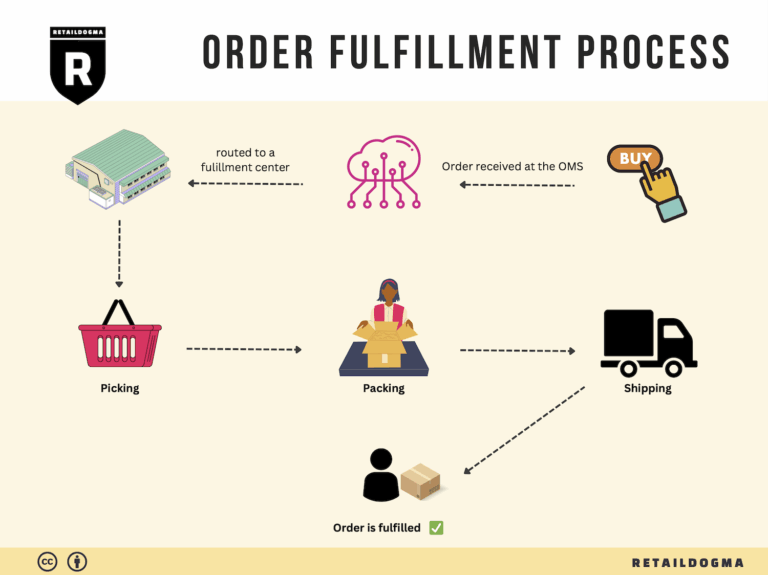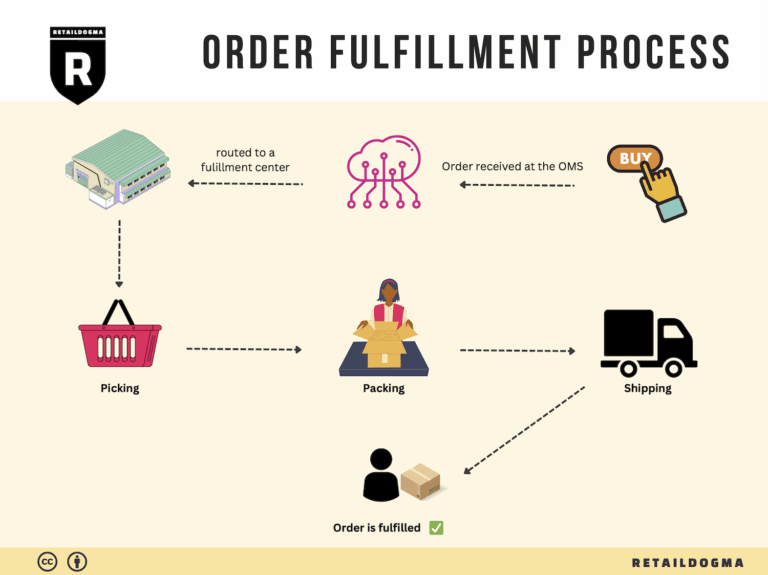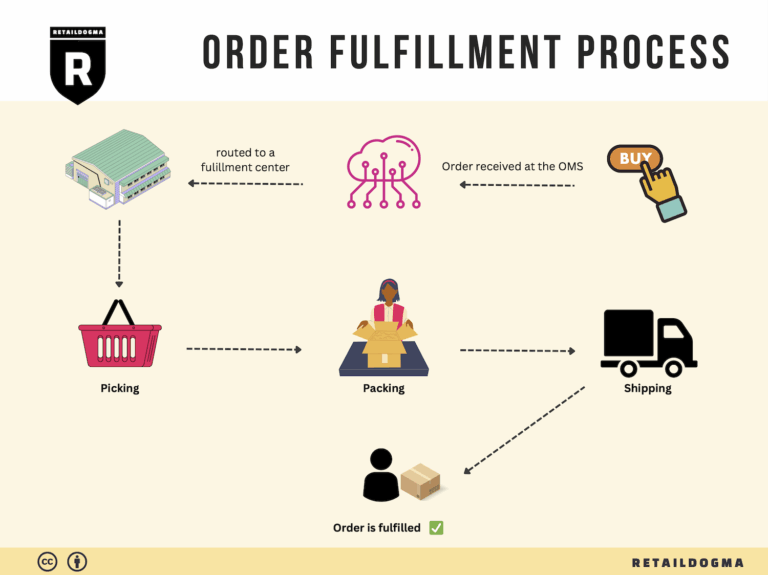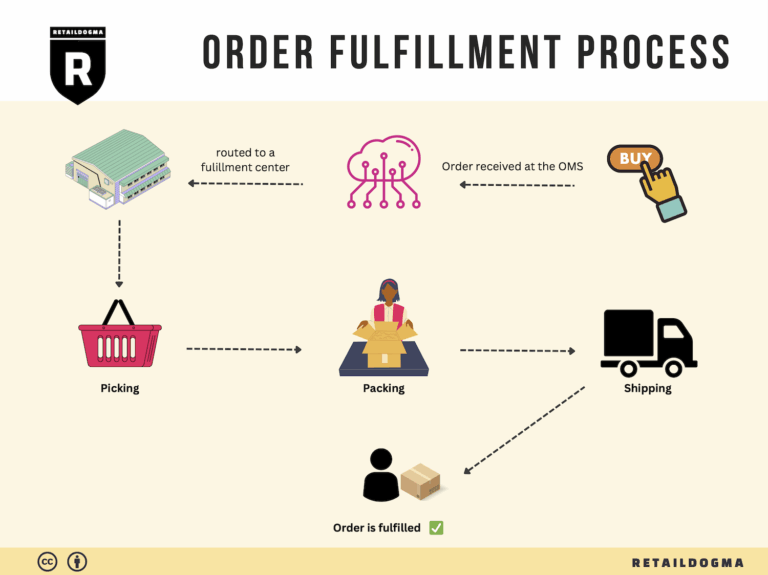What Is A Fulfillment Center? A Complete Guide (2025)
What is E-commerce Fulfillment? An Introduction for Growing Businesses
Understanding the Challenges of Order Fulfillment
As an e-commerce business owner, you may find yourself grappling with the overwhelming task of packing and shipping orders. This common pain point can consume valuable time and resources, diverting your focus from growing your business. When orders start to pile up, the pressure mounts, and the risk of errors increases. The reality is that efficient fulfillment is critical to maintaining customer satisfaction and loyalty.
What is E-commerce Fulfillment?
At its core, e-commerce fulfillment is the process of getting a product into the hands of a customer. This process encompasses everything from inventory management and order processing to packing, shipping, and handling returns. As your business scales, understanding the nuances of fulfillment becomes essential for maintaining operational efficiency and enhancing the customer experience.
Overview of the Guide
This guide aims to clarify the various fulfillment models available to growing businesses, including traditional warehousing, third-party logistics (3PL), and Fulfillment by Amazon (FBA). Each model has its own set of advantages and challenges, and we will delve into how these can align with your business needs.
In addition to models, we will discuss core fulfillment services, including inventory storage, order picking and packing, shipping logistics, and returns management. Understanding these services will help you determine what you need from a fulfillment partner.
Choosing the right logistics partner is another crucial aspect we’ll cover. Factors such as pricing, scalability, technology integration, and customer service are essential to consider when evaluating potential partners. We’ll provide practical tips to help you navigate this decision-making process effectively.
Empowering Your Business Decisions
The ultimate goal of this guide is to empower you with the knowledge to make informed decisions about your logistics strategy. By understanding the various fulfillment options, core services, and how to select a partner, you can streamline your operations, reduce costs, and enhance customer satisfaction. As you navigate the complexities of e-commerce fulfillment, remember that the right approach can set the foundation for sustainable growth and success in your business.
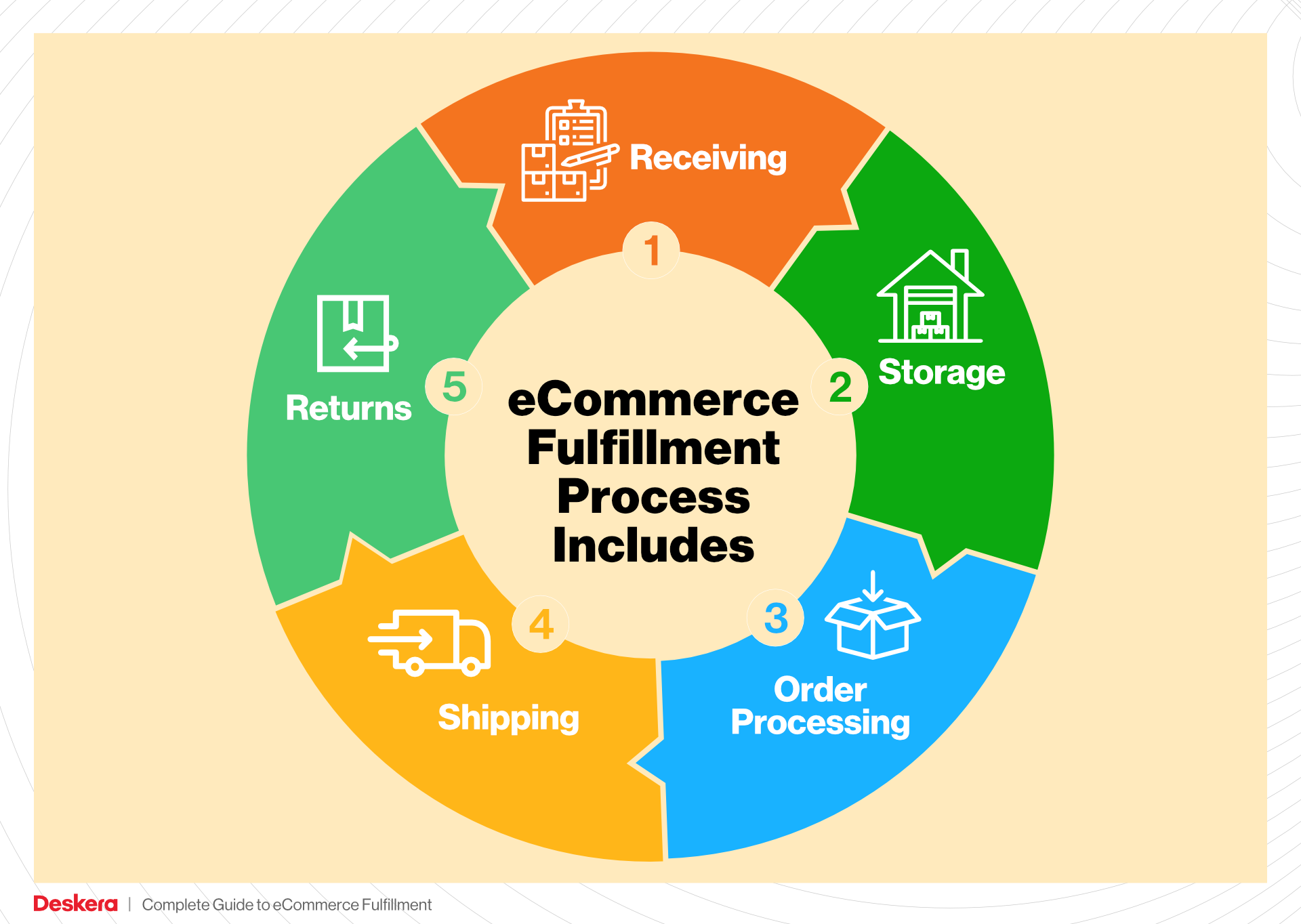
What You’ll Learn In This Guide
- What is E-commerce Fulfillment? An Introduction for Growing Businesses
- The Order Fulfillment Process: From ‘Buy’ Button to Customer’s Door
- Comparing Fulfillment Models: In-House vs. 3PL vs. Dropshipping
- A Deep Dive into Amazon FBA: Pros, Cons, and Who It’s For
- Core Services Offered by Fulfillment Centers
- How to Choose a Fulfillment Partner: A 6-Point Checklist
- Understanding Fulfillment Pricing: A Breakdown of Common Fees
- Frequently Asked Questions (FAQs) about Fulfillment
- Conclusion: Is Outsourcing Fulfillment the Right Move for Your Business?
- Important Disclaimer
The Order Fulfillment Process: From ‘Buy’ Button to Customer’s Door
1. Receiving Inventory
The order fulfillment process begins with receiving inventory. This step involves the acceptance of goods from suppliers into your fulfillment center or warehouse. Upon arrival, items are inspected for quality and accuracy against the purchase order to ensure that the correct quantities and products have been received. Each product is assigned a unique identifier, known as a Stock Keeping Unit (SKU), which allows for efficient tracking and management throughout the fulfillment process.
This step is critical because accurate inventory receiving sets the foundation for the entire fulfillment operation. Any discrepancies in this phase can lead to stockouts or overstocking, which can ultimately affect sales and customer satisfaction. Proper inventory management practices, such as utilizing inventory management software, can streamline this process, allowing businesses to maintain optimal stock levels and avoid costly errors.
2. Warehouse Storage
Once the inventory has been received and verified, the next step is warehouse storage. Products are organized and stored in designated areas within the fulfillment center. This organization often follows a systematic layout, such as utilizing bins, shelving units, or pallets, which aids in maximizing space and improving accessibility.
The importance of effective warehouse storage cannot be overstated. A well-organized warehouse minimizes the time required for order picking and ensures that items can be easily located. Implementing strategies such as First-In, First-Out (FIFO) can help manage inventory rotation, particularly for perishable goods. Moreover, accurate storage and labeling not only enhance operational efficiency but also reduce the risk of shipping errors, which can lead to customer dissatisfaction.
3. Order Picking
Order picking is the process of retrieving items from their storage locations to fulfill customer orders. This step typically utilizes a “pick list,” which is a document or digital display that outlines the items to be picked and their respective locations within the warehouse. Picking methods can vary, including single-order picking, batch picking, or zone picking, depending on the volume of orders and the complexity of the warehouse layout.
This stage is crucial for ensuring that customers receive the correct items in a timely manner. Efficient picking processes can significantly impact overall fulfillment speed and accuracy. Businesses often invest in technologies such as barcode scanners and mobile devices to enhance picking efficiency and reduce errors. By optimizing the picking process, companies can improve their fulfillment rates, leading to higher customer satisfaction and repeat business.

4. Order Packing
After the items have been picked, they move to the packing stage. During packing, items are carefully placed into boxes or containers, along with any necessary documentation, such as packing slips or invoices. This step may also involve additional quality checks to ensure that the correct items are being sent to the customer. Packaging materials must be chosen wisely to protect products during transit while also considering cost efficiency.
The packing process is vital because it directly impacts the customer’s unboxing experience and the likelihood of product damage during shipping. Businesses should consider using branded packaging to enhance the customer experience and reinforce brand identity. Additionally, implementing packing automation solutions can increase efficiency and reduce labor costs. A well-executed packing process leads to fewer returns and a more positive perception of the brand.
5. Shipping & Delivery
The final step in the order fulfillment process is shipping and delivery. Once orders are packed, they are labeled and prepared for shipment. This involves selecting a shipping carrier based on factors such as cost, delivery speed, and destination. Businesses often utilize shipping software to streamline this process, allowing for real-time tracking and management of shipments.
The significance of efficient shipping and delivery cannot be understated. Fast and reliable delivery is a key factor in customer satisfaction and retention. Customers increasingly expect quick shipping options, such as same-day or next-day delivery, which can be facilitated through partnerships with third-party logistics providers (3PLs) or by utilizing fulfillment centers located strategically close to target markets. By focusing on shipping efficiency, businesses can enhance their competitive edge and build long-lasting relationships with their customers.
In conclusion, mastering each step of the order fulfillment process is essential for e-commerce businesses looking to scale their operations effectively. By ensuring that each phase is executed with precision and efficiency, companies can meet customer expectations and drive growth in the highly competitive online marketplace.
Comparing Fulfillment Models: In-House vs. 3PL vs. Dropshipping
Fulfillment Model Comparison
| Model | Who Handles Inventory | Best For (Business Stage) | Key Advantage | Key Disadvantage |
|---|---|---|---|---|
| In-House Fulfillment | The business itself | Established businesses | Full control over inventory and processes | High overhead costs and labor management |
| Third-Party Logistics (3PL) | A third-party provider | Growing businesses | Scalability and reduced operational burden | Less control over inventory and potential service variability |
| Dropshipping | Supplier or manufacturer | Startups and niche retailers | Low upfront investment and no inventory risk | Lower margins and potential quality issues |
In-House Fulfillment
In-house fulfillment involves a business managing its own inventory, storage, packing, and shipping processes. This model is particularly suitable for established businesses that have the resources and infrastructure to handle logistics internally. The key advantage of in-house fulfillment is the level of control it provides. Businesses can oversee the entire process, ensuring quality and consistency in how products are handled and shipped. They can also implement tailored processes that align with their specific operational needs.
However, in-house fulfillment comes with significant challenges. The overhead costs can be substantial, as businesses must invest in warehousing, staff, and technology to manage their logistics operations efficiently. Additionally, the complexity of inventory management and the need to adapt to fluctuating order volumes can strain resources. As a business scales, it may find itself stretched thin, leading to potential fulfillment delays or errors that could harm customer satisfaction.
Third-Party Logistics (3PL)
Third-party logistics (3PL) providers offer a comprehensive solution for businesses looking to outsource their fulfillment processes. With 3PL, businesses send their inventory to a logistics partner, who then manages storage, order processing, and shipping on their behalf. This model is ideal for growing businesses that want to scale operations without the burden of managing logistics internally.
The primary advantage of using a 3PL is scalability. As order volumes increase, 3PLs can easily accommodate growth without requiring businesses to invest in additional infrastructure or staff. They also bring expertise in logistics and often have established relationships with shipping carriers, which can lead to cost savings and improved delivery times. However, the downside is that businesses may relinquish some control over their inventory and fulfillment processes. Variability in service quality can also be a concern, especially if the 3PL does not align well with the company’s standards or customer expectations.
Dropshipping
Dropshipping is a fulfillment model where the retailer sells products that are manufactured and stored by a third party. When an order is placed, the retailer forwards the order details to the supplier, who then ships the product directly to the customer. This model is particularly attractive for startups and niche retailers who want to minimize their financial risk and avoid the complexities of inventory management.
One of the most significant advantages of dropshipping is the low upfront investment required. Retailers do not need to purchase inventory in advance, which allows them to offer a broader range of products without the risk of overstocking. Additionally, dropshipping eliminates the need for warehousing and logistics management, allowing entrepreneurs to focus on marketing and customer acquisition. However, the disadvantages include lower profit margins, as suppliers often charge higher prices for their products, and potential quality control issues, since the retailer has no direct oversight of the product until it reaches the customer. Moreover, reliance on suppliers can lead to challenges with stock availability and shipping times, which can impact customer satisfaction.
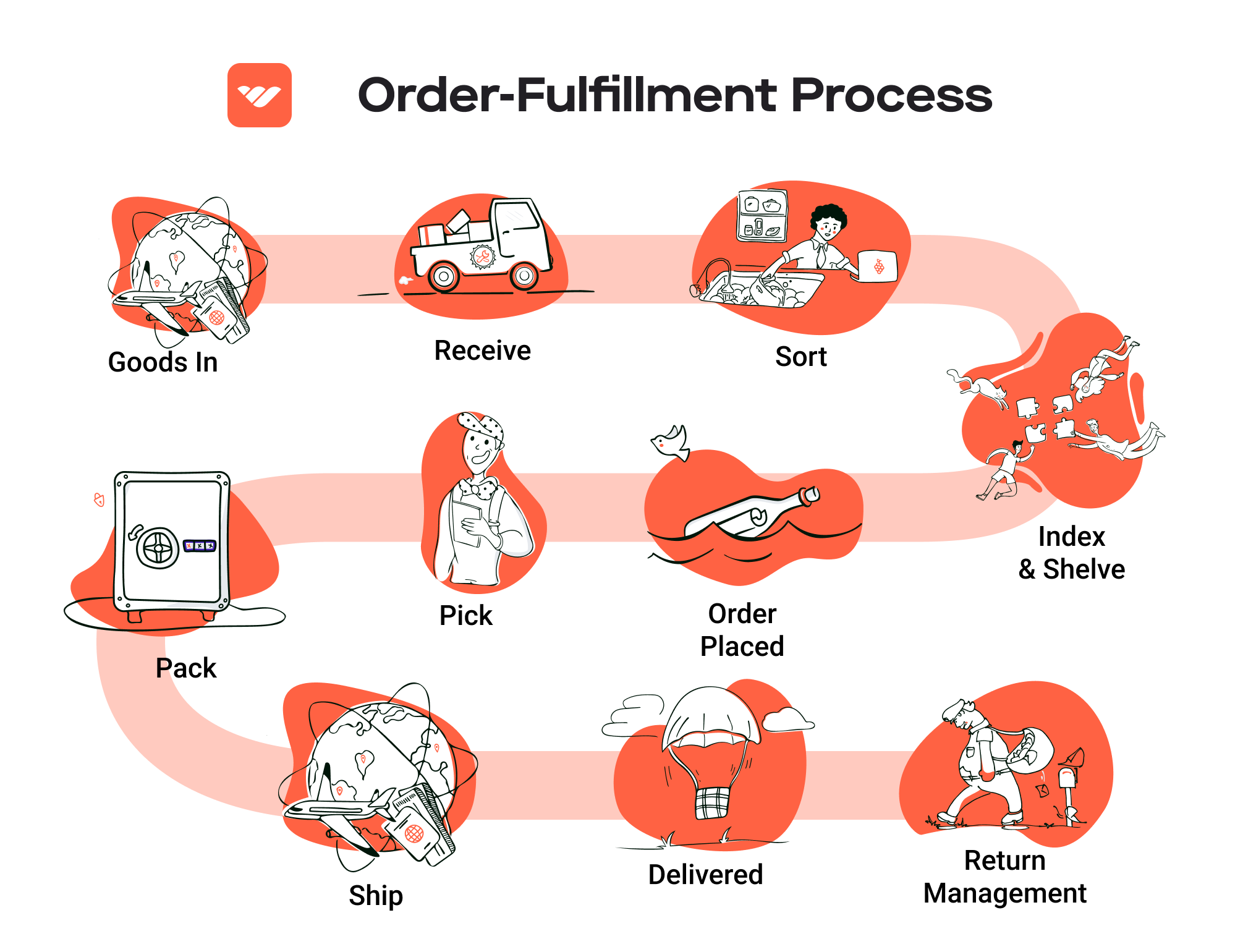
Conclusion
Choosing the right fulfillment model is critical for e-commerce businesses looking to scale efficiently. Each model—In-House Fulfillment, Third-Party Logistics (3PL), and Dropshipping—offers unique advantages and challenges that can significantly impact operations and customer experience. Businesses must carefully evaluate their current stage, resources, and growth ambitions to select the fulfillment strategy that aligns best with their operational goals and customer expectations.
A Deep Dive into Amazon FBA: Pros, Cons, and Who It’s For
Understanding Fulfillment by Amazon (FBA)
Fulfillment by Amazon (FBA) is a service offered by Amazon that allows sellers to store their products in Amazon’s fulfillment centers. Amazon then takes care of storage, packaging, shipping, and customer service on behalf of the sellers. This service has become increasingly popular among e-commerce businesses looking to scale their operations efficiently while leveraging Amazon’s vast logistics network.
When a customer orders a product listed as fulfilled by Amazon, the item is picked from the seller’s inventory stored in the fulfillment center, packaged, and shipped directly to the customer. Amazon also handles returns and customer inquiries, allowing sellers to focus on other aspects of their business.
How FBA Works
- Product Listing: Sellers create product listings on Amazon and choose the FBA option for those items.
- Inventory Shipment: Sellers send their products to Amazon’s fulfillment centers. Amazon provides guidelines on how to prepare and package these products.
- Storage: Once received, Amazon stores the products in their warehouses. Sellers can monitor inventory levels through their Amazon seller account.
- Order Processing: When a customer places an order, Amazon takes over. They pick the item from the warehouse, package it, and ship it using their shipping network.
- Customer Service: Amazon manages all customer inquiries and returns, which can significantly reduce the workload for sellers.
- Payment: After the sale, Amazon collects the payment, deducts its fees, and disburses the remaining amount to the seller.
Pros of Using FBA
1. Prime Eligibility
One of the standout features of FBA is that products fulfilled by Amazon are eligible for Amazon Prime. This means that customers can benefit from free two-day shipping, which can significantly increase conversion rates. Prime members are often more willing to purchase items with Prime shipping options, leading to higher sales for sellers.
2. Customer Trust
Amazon has established a strong brand reputation for reliability and customer service. By using FBA, sellers can leverage this trust, as customers often feel more secure purchasing products that are fulfilled by Amazon. This can lead to more positive reviews and repeat customers.
3. Multi-Channel Fulfillment
FBA isn’t limited to just Amazon sales. Sellers can use FBA to fulfill orders from their own websites or other marketplaces. This means that sellers can streamline their logistics through Amazon, benefiting from their efficient fulfillment processes regardless of where the sale originated.
4. Scalability
FBA allows sellers to scale their businesses without the need to invest heavily in logistics infrastructure. As sales grow, sellers can send more inventory to Amazon without worrying about warehousing or shipping themselves.
5. Automated Customer Service
With Amazon handling customer service for FBA orders, sellers can focus on product development, marketing, and other critical aspects of their business. This can lead to better overall business performance and growth.
Cons of Using FBA
1. High Fees
While FBA provides many conveniences, it comes at a cost. Amazon charges various fees, including storage fees for the inventory stored in their warehouses and fulfillment fees for each item sold. For sellers with low margins, these fees can eat into profits significantly.
2. Strict Inventory Rules
Sellers must adhere to Amazon’s strict inventory management policies. This includes guidelines on how to package and label items, as well as limitations on certain types of products. Non-compliance can result in additional fees or even the removal of inventory.
3. Commingling Risks
FBA uses a commingling system, which means that the inventory of multiple sellers is stored together in Amazon’s warehouses. While this can streamline operations, it also poses a risk if a customer receives a defective or counterfeit product from another seller’s stock. Such situations can lead to negative reviews and potential damage to a seller’s reputation.
4. Loss of Control
When using FBA, sellers relinquish some control over their fulfillment process. This includes how orders are packaged and shipped. Sellers may not be able to customize the packaging or branding as they would if they handled fulfillment themselves.
5. Dependency on Amazon
By relying on FBA, sellers may become overly dependent on Amazon’s platform. Changes in Amazon’s policies, fees, or algorithms can significantly impact a seller’s business. Diversifying sales channels can mitigate this risk, but it requires additional effort and resources.
Who is FBA Best For?
FBA is particularly beneficial for:
- Small to Medium-Sized Businesses: Sellers looking to scale their operations without investing heavily in logistics can benefit from FBA’s infrastructure.
- E-commerce Entrepreneurs: Those who want to focus on product development and marketing rather than managing fulfillment will find FBA’s automated services appealing.
- Established Brands: Brands that already have some sales volume but want to expand their reach through Amazon’s platform will benefit from the increased visibility and trust associated with FBA.
- Multi-Channel Sellers: Businesses selling on multiple platforms who want to streamline their fulfillment processes can take advantage of FBA’s multi-channel fulfillment capabilities.
In conclusion, while FBA offers numerous advantages that can help businesses scale and simplify their operations, it is essential for sellers to weigh these benefits against the potential downsides. Understanding the nuances of FBA can empower e-commerce business owners to make informed decisions that align with their growth strategies.
Core Services Offered by Fulfillment Centers
Inventory Management & Warehousing
Inventory management and warehousing are fundamental services provided by fulfillment centers. This involves the systematic control of stock levels, ensuring that e-commerce businesses have the right amount of inventory on hand to meet customer demand without incurring excess costs associated with overstocking.
Fulfillment centers utilize advanced inventory management systems that track stock levels in real-time, allowing businesses to monitor their inventory efficiently. These systems can provide insights into sales trends, seasonal demand, and product performance, which are critical for making informed purchasing decisions.
Benefits to E-commerce Businesses:
1. Reduced Holding Costs: By efficiently managing inventory levels, businesses can minimize storage costs and avoid the financial burden of unsold stock.
2. Enhanced Order Fulfillment Speed: With organized warehousing, products are stored in a manner that optimizes picking efficiency, leading to faster order processing and improved customer satisfaction.
3. Data-Driven Insights: Access to detailed inventory reports helps businesses forecast demand accurately, enabling better planning and reducing the risk of stockouts or overstock situations.
Pick and Pack Services
Pick and pack services are at the heart of the fulfillment process. This service involves selecting the right products from inventory (picking) and then packaging them for shipment (packing) based on customer orders. Fulfillment centers employ efficient picking methods, such as batch picking or wave picking, to streamline this process.
Fulfillment centers often use automated systems to enhance accuracy and speed during the picking process. Once the items are picked, they are carefully packed to ensure they arrive in perfect condition, with appropriate materials used to prevent damage during transit.
Benefits to E-commerce Businesses:
1. Increased Efficiency: By outsourcing pick and pack services, businesses can focus on core activities like marketing and product development rather than logistics.
2. Improved Accuracy: Professional fulfillment centers have established procedures that reduce errors in order fulfillment, leading to higher customer satisfaction and lower return rates.
3. Scalability: As businesses grow, fulfillment centers can easily scale their pick and pack operations to handle increasing order volumes without requiring additional resources from the business.
Kitting and Assembly
Kitting and assembly are specialized services that involve creating bundled products or preparing items for sale. This can include assembling products, packaging multiple items together, or creating promotional kits. For instance, if an e-commerce business sells gift baskets or subscription boxes, kitting services can efficiently handle the assembly of these products before they are shipped to customers.
Fulfillment centers that offer kitting and assembly services can also accommodate custom requests, such as unique packaging or promotional items, which can enhance brand presentation and appeal.
Benefits to E-commerce Businesses:
1. Enhanced Product Offering: By utilizing kitting services, businesses can offer unique product combinations that attract customers and increase average order value.
2. Time Savings: Outsourcing kitting and assembly allows businesses to save time and resources, enabling them to focus on strategic growth initiatives.
3. Quality Control: Professional fulfillment centers ensure that all assembled products meet quality standards, reducing the risk of customer dissatisfaction due to poorly packaged or assembled items.
Returns Management (Reverse Logistics)
Returns management, or reverse logistics, is a critical service provided by fulfillment centers that involves handling product returns from customers. This process can be complex, as it requires assessing the condition of returned items, restocking them, or managing refunds and exchanges efficiently.
Fulfillment centers streamline the returns process by implementing systematic procedures for assessing returned items, updating inventory, and processing refunds. This can include inspecting products, repackaging them if necessary, and determining whether items can be restocked or need to be disposed of.
Benefits to E-commerce Businesses:
1. Customer Retention: A well-managed returns process enhances customer experience, making it more likely that customers will shop again, even after a return.
2. Operational Efficiency: Outsourcing returns management reduces the administrative burden on e-commerce businesses, allowing them to focus on growth rather than logistics.
3. Data Insights: Fulfillment centers can provide valuable data on return trends, helping businesses identify product issues or areas for improvement in their offerings.
In summary, partnering with a fulfillment center offers e-commerce businesses a suite of essential services that enhance operational efficiency, improve customer satisfaction, and support growth. By leveraging these services, businesses can focus on their core competencies while ensuring that their logistics operations are in expert hands.
How to Choose a Fulfillment Partner: A 6-Point Checklist
Location & Warehouse Network
Importance:
The geographical location of your fulfillment partner and their network of warehouses can significantly impact shipping times and costs. A partner with multiple warehouses strategically located near your customer base can lead to faster deliveries and reduced shipping fees, enhancing customer satisfaction.
Questions to Ask:
– Where are your warehouses located, and how does that align with my target market?
– Do you have the capability to open additional warehouses if needed?
– What is your average shipping time to key regions?
– How do you handle shipping to remote or less accessible areas?
Technology & Integrations
Importance:
The technology used by your fulfillment partner is crucial for ensuring seamless operations. A robust technology platform can provide real-time inventory management, order tracking, and integration with your e-commerce platform, which is essential for maintaining operational efficiency and transparency.
Questions to Ask:
– What technology platform do you use for inventory management and order fulfillment?
– Can your system integrate with my existing e-commerce platform (e.g., Shopify, WooCommerce)?
– Do you offer real-time tracking for orders, and how is this communicated to customers?
– What reporting tools do you provide to analyze shipping performance and inventory levels?
Specializations (e.g., cold storage, oversized items)
Importance:
Different businesses have unique needs, especially if you sell specialized products such as perishables, oversized items, or hazardous materials. Choosing a fulfillment partner with the right specializations ensures that your products are stored, handled, and shipped according to industry standards and regulations.
Questions to Ask:
– What types of products do you specialize in handling?
– Do you have facilities for cold storage or climate-controlled environments?
– How do you manage oversized or bulky items in terms of storage and shipping?
– Are you compliant with any specific industry regulations (e.g., food safety, hazardous materials)?
Scalability & Capacity
Importance:
As your business grows, your fulfillment needs will evolve. It’s essential to choose a partner that can scale with you, whether that means handling increased order volumes during peak seasons or expanding services as your product line grows.
Questions to Ask:
– What is your current capacity for handling orders, and how do you scale during peak times?
– Can you accommodate seasonal fluctuations in order volume without compromising service quality?
– What is your process for onboarding new products or categories?
– How do you ensure that additional capacity does not lead to increased errors or delays?
Pricing and Contracts
Importance:
Understanding the pricing structure of your fulfillment partner is critical for budgeting and profitability. A clear and transparent pricing model helps avoid unexpected costs, and well-defined contracts protect your business interests.
Questions to Ask:
– What is your pricing structure (e.g., per order, per item, monthly fees)?
– Are there any hidden fees I should be aware of (e.g., storage fees, pick-and-pack fees)?
– What is the duration of your contracts, and what are the terms for termination or renewal?
– Do you offer any flexibility in pricing based on volume or long-term commitments?
Customer Support & Reviews
Importance:
Reliable customer support is vital in addressing issues swiftly and maintaining operational continuity. Additionally, reviewing feedback from other clients provides insight into the partner’s reliability and service quality.
Questions to Ask:
– What customer support options do you offer (e.g., phone, email, chat)?
– How quickly do you typically respond to support inquiries?
– Can you provide references or case studies from businesses similar to mine?
– What is your process for handling fulfillment errors or complaints?
Conclusion
Choosing the right fulfillment partner is a critical decision that can significantly impact your e-commerce business’s success. By using this checklist, you can systematically evaluate potential partners based on key factors such as location, technology, specialization, scalability, pricing, and support. This comprehensive approach will help ensure that you find a partner capable of meeting your current needs and supporting your future growth.
Understanding Fulfillment Pricing: A Breakdown of Common Fees
Initial Setup Fees
Initial setup fees are the costs associated with getting your account up and running with a fulfillment service. These fees can vary significantly depending on the provider and the complexity of your needs. Generally, they cover account creation, system integration, and any necessary training or onboarding support.
Setup fees might also include costs for configuring your inventory management system and connecting your online store to the fulfillment center’s platform. For example, if you’re integrating with multiple sales channels, expect to incur higher setup fees due to the additional technical work required. Some fulfillment centers may waive these fees as a promotional strategy, especially for larger accounts, so it’s worth negotiating.
Receiving Fees
Receiving fees are charged when the fulfillment center accepts your inventory. This fee typically covers the labor and resources required to unload, inspect, and store your products. The calculation of receiving fees may vary based on the number of pallets, boxes, or individual items you send to the warehouse.
For instance, you might encounter a flat fee per pallet or a tiered structure where the cost decreases as you send more pallets. Some providers may also charge for additional services like labeling or repacking upon receipt. Understanding how these fees are structured can help you plan your shipments more effectively and avoid unexpected costs.
Storage Fees (per pallet/bin)
Storage fees are charged based on the space your inventory occupies within the fulfillment center. These fees can be calculated per pallet or per bin, depending on the size and nature of your products. Storage fees are typically billed monthly and can vary based on the time of year; for example, rates may increase during peak seasons when demand for space is high.
Most fulfillment centers will have a minimum monthly storage fee, but they may also provide discounts for longer-term commitments or higher volume storage. It’s important to keep track of your inventory turnover rates, as high storage fees can significantly impact your profit margins, especially if you have slow-moving items.
Pick & Pack Fees (per item/order)
Pick and pack fees are charged for the labor involved in selecting items from your inventory and preparing them for shipment. This fee is usually calculated per item or per order. If you have a high volume of orders with multiple items, the costs can add up quickly.
Some fulfillment centers offer tiered pricing, where the cost per item decreases as the volume of items increases, which can be beneficial for businesses with larger order volumes. Additionally, specialized packing services, such as gift wrapping or custom packaging, may incur extra charges. Understanding your order patterns can help you choose the right fulfillment partner and pricing model.
Shipping Fees
Shipping fees are the costs associated with transporting your products from the fulfillment center to your customers. These fees can vary based on factors like package dimensions, weight, shipping speed, and the destination. Most fulfillment centers have partnerships with major carriers, which may allow them to offer discounted shipping rates.
Shipping fees can be calculated based on a flat rate, weight-based pricing, or dimensional weight pricing, depending on the provider and the type of products being shipped. It’s crucial to understand how these fees are structured, as they can significantly affect your overall shipping costs and customer pricing strategies.
Tips for Getting an Accurate Quote
-
Provide Detailed Information: When requesting a quote, be as detailed as possible about your product specifications, expected order volumes, and shipping requirements. This will help fulfillment centers provide a more accurate estimate.
-
Ask About Hidden Fees: Inquire about any additional or hidden fees that may not be included in the initial quote, such as long-term storage fees, additional pick and pack fees for special requests, or costs for returned items.
-
Compare Multiple Providers: Don’t settle for the first quote you receive. Compare multiple fulfillment services to evaluate their pricing structures, services offered, and customer reviews.
-
Negotiate: Many fulfillment centers are open to negotiation, especially if you expect to send a high volume of orders. Don’t hesitate to ask for discounts or better terms.
-
Consider Seasonal Variations: Discuss how pricing might change during peak seasons or holidays, as many fulfillment centers adjust their rates based on demand.
By understanding these common fulfillment pricing models and following these tips, e-commerce business owners can make informed decisions that align with their operational needs and budget constraints.
Frequently Asked Questions (FAQs) about Fulfillment
1. What is Amazon Fulfillment?
Amazon Fulfillment refers to the services provided by Amazon to store, package, and ship products on behalf of sellers. Sellers can send their products to Amazon’s fulfillment centers, and Amazon takes care of the logistics, including inventory management, order processing, and customer service.
2. How does the Amazon Fulfillment process work?
The process begins when a seller sends their inventory to an Amazon fulfillment center. Once a customer places an order, Amazon picks the product from the inventory, packs it, and ships it directly to the customer. Sellers can also track their inventory and orders through the Amazon Seller Central dashboard.
3. What is the difference between a warehouse and a fulfillment center?
A warehouse is primarily used for storing goods, while a fulfillment center is designed for processing and shipping orders. Fulfillment centers have advanced technology and systems in place to efficiently pick, pack, and ship products directly to customers, whereas warehouses may not have these capabilities.
4. What is a 3PL (Third-Party Logistics)?
A 3PL is a service provider that offers logistics and fulfillment services to businesses. This can include warehousing, order fulfillment, transportation, and inventory management. By outsourcing these functions to a 3PL, businesses can focus on their core competencies while leveraging the expertise of logistics professionals.
5. How much do fulfillment services cost?
Fulfillment service costs can vary widely based on factors such as storage fees, picking and packing fees, shipping costs, and additional services like returns processing. On average, costs can range from $3 to $5 per order for picking and packing, with storage fees ranging from $0.10 to $0.75 per cubic foot, depending on the provider.
6. How can Amazon Fulfillment help my business grow?
By utilizing Amazon Fulfillment, sellers can reach a broader audience through Amazon’s marketplace, benefit from Prime shipping, and improve customer satisfaction with faster delivery times. This can lead to increased sales and improved customer loyalty, ultimately contributing to business growth.
7. What are the benefits of using Amazon Fulfillment?
The main benefits include access to Amazon’s vast customer base, improved shipping speed and reliability, simplified logistics management, and the ability to scale operations without significant upfront investment in warehousing or staffing.
8. Are there any drawbacks to using Amazon Fulfillment?
Some drawbacks may include the costs associated with fulfillment services, potential loss of control over the customer experience, and the need to adhere to Amazon’s policies and guidelines. Additionally, sellers must manage their inventory levels carefully to avoid stockouts or excess storage fees.
9. How do I get started with Amazon Fulfillment?
To get started, you will need to create an Amazon Seller account and set up your product listings. Then, you can prepare your inventory according to Amazon’s guidelines and ship it to a fulfillment center. Once your products are in the system, you can start receiving orders and let Amazon handle the fulfillment.
10. Can I use Amazon Fulfillment for products not sold on Amazon?
Yes, you can use Amazon’s fulfillment services for products sold on other platforms. This is known as Fulfillment by Amazon (FBA), where you can manage sales through your website or other marketplaces while Amazon handles the logistics. However, you will need to ensure that your sales channels integrate effectively with Amazon’s systems.
Conclusion: Is Outsourcing Fulfillment the Right Move for Your Business?
Evaluating the Impact of Outsourcing Fulfillment
Outsourcing fulfillment can be a transformative decision for e-commerce businesses aiming to scale efficiently. By leveraging the expertise and infrastructure of a fulfillment service, businesses can save significant time, allowing them to focus on core operations like marketing and product development. Fulfillment centers streamline the logistics process, ensuring that orders are picked, packed, and shipped with precision, ultimately enhancing customer satisfaction and loyalty.
Another key advantage of outsourcing is scalability. As your business grows, so do the complexities of managing inventory and shipping logistics. A capable fulfillment partner provides the flexibility to scale operations up or down in response to market demand, without the burden of managing additional warehouse space or staffing. This adaptability not only supports growth but also reduces operational risks associated with fluctuating sales volumes.
Moreover, partnering with an experienced fulfillment provider brings specialized knowledge to your logistics strategy. These experts are well-versed in the intricacies of shipping regulations, inventory management, and optimizing delivery routes. This expertise can lead to improved operational efficiency and cost savings, giving you a competitive edge in the marketplace.
However, selecting the right fulfillment partner is crucial for realizing these benefits. Not all providers are created equal; it’s essential to evaluate their capabilities, technology, and service offerings to ensure alignment with your business goals.
As a strategic next step, consider conducting an audit of your current shipping processes. Assess your fulfillment challenges, customer feedback, and operational costs. This evaluation will help you determine whether a fulfillment partner could enhance your logistics performance and support your growth objectives. Taking this proactive approach can set the stage for future success in the ever-evolving e-commerce landscape.
Important Disclaimer
⚠️ Important Disclaimer
The information in this guide is for educational purposes. Fulfillment services, pricing, and platform features change frequently. Always conduct your own due diligence and consult with providers directly before making business decisions.
